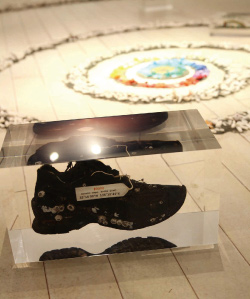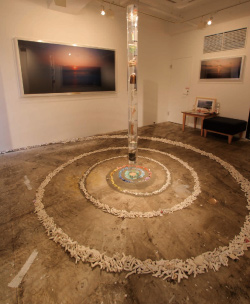Reviews
PPAS Special Feature Article
Pinhole photography
I first encountered pinhole cameras when I was a student in the U.S., but, to be honest, I was not really interested in them then. However, later, one of my closest friends, who worked for a professional camera shop in Ginza, Tokyo, contacted me and told me there was a used 8X10 inch camera on sale at a very reasonable price. I was not able to afford a lens at the time, so I just bought the box. This was to be the beginning of my life with pinhole photography. Coincidentally, around the time I received the box, in March 1988, I had plans to take a trip to the Shikoku region during the winter vacation from the university. I still didn’t have a lens, but I wanted to take the box anyway, in case the opportunity for a photo shoot arose. I ordered some color film and left on the trip.
My very first pinhole photo was of the sunrise at Cape Muroto in Shikoku. There was a strong connection here, as my mother, who was bedridden in a hospital in Yokohama, believed deeply in the famous priest, Kobo-daishi. I set up a tripod facing east one hour before the sunrise, and waited for the light to come, praying for a cure for my mother’s illness, coincidentally on the day of the spring equinox. After the trip, I returned to Kyoto, had the film developed, and found the photos had come out far better than I had expected. This gave me a real incentive to proceed with new challenges in expression. After that, I continued to visit different coastlines taking pinhole photos of sunrises, sunsets, lights, wind and air. I have covered most of the coastlines of Japan over a period of 18 years, and continue now on my second journey.
While I waited during the long-exposure times (I sometimes had to wait for the sun for over an hour) necessary for pinhole photo shoots, I often picked up castaway objects, that were not included in photos, along coastal areas. “SAMSARA” (“reincarnation” in Sanskrit) is an installation work, inspired by these castaway objects, and is a spin-off from the “Wind Mandala” series of pinhole photographs. When I checked on the areas where I gathered the objects using Google Earth, I found out that the coastlines of the islands of Japan had changed drastically and was able to identify clear lines of waste. As the subtitle of this work, “Visible to Invisible,” indicates, I have strived for awareness of those things that change, that remain the same, that can be invisible and can be overlooked, in the loop of a time line. I feel there are many problems that we seriously need to consider on a global scale, rather than to continue on simply demanding convenience.
The “Engi Mandala” series, started in 1988, is a collection of photos taken during visits to 88 sacred sites in Shikoku. I took the portraits of people I met during the visits with a Polaroid camera, and each person in a photo held the photo of a person who had been the previous subject, in order to form a “chain of people.” I used these photos as an example of open media to express the connections between people.




